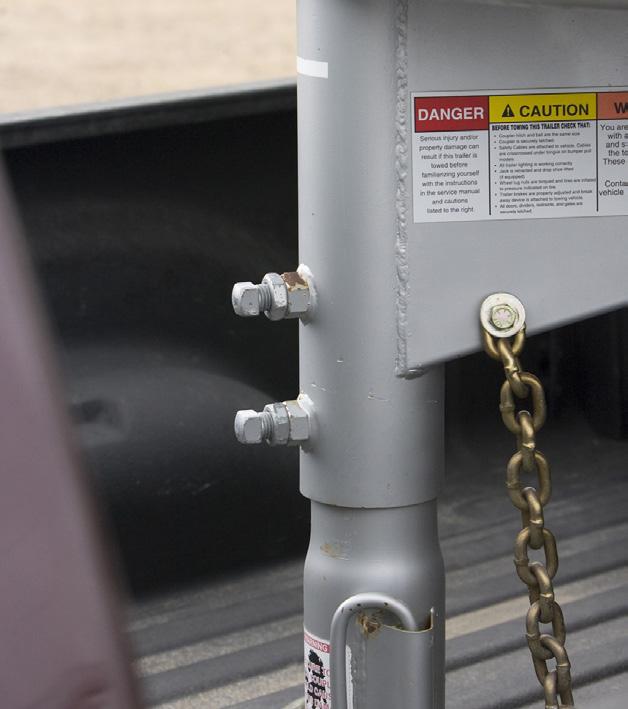
3 minute read
Handy Checklist
Used-Trailer Shopping Tips If your budget doesn’t allow for a new horse trailer this year, consider a well-cared-for, well-designed used trailer. Here’s a shopping checklist.
When buying a used trailer, look for a roomy, well-ventilated, well-lit model with a safe, sturdy design. PHOTO BY HEIDI MELOCCO
■ Avoid impulse buys. Don’t buy the first trailer you see. Shop around. The wrong trailer is no deal at any price. ■ Consider your horse. Put your horse’s safety and comfort first. Look at the trailer from his point of view. Avoid dark, stuffy trailers. Look for a roomy, well-ventilated, well-lit trailer with a safe, sturdy design. ■ Determine the GVWR. Determine the trailer’s Gross Vehicle Weight Rating. The GVWR, which relates to the axle and coupler rating/capacity, tells you how much the trailer can weigh with horses and cargo and be safe to haul. Older, smaller used trailers can have lower GVWRs than larger, newer models. It’s easy to exceed this limit.
Determine the trailer’s Gross Vehicle Weight Rating. Older, smaller used trailers can have lower GVWRs than larger, newer models. PHOTO BY HEIDI MELOCCO

■ Avoid sharp edges. Inspect the trailer for sharp edges, sharp tie rings, and other things that could injure your horse. ■ Check the ramp. Avoid steep, slippery ramps. Look for ramps that are easy to lift. Ideally, the design should allow you to access each horse individually and be unloaded without unloading the others. Look for quick-release dividers, bars, and center posts. ■ Check for rust and corrosion. Some surface rust on steel trailers is acceptable if it isn’t in a structural area; it’s usually an easy fix. Lift the mats, and check the floor. Avoid wood floors with rotting or soft spots. Avoid aluminum trailers with any hint of corrosion. ■ Check underneath. Look for problems with the under-floor frame. Stay away from aluminum trailers that have corrosion or stress fractures in the frame or welds, or steel trailers with frame rust. Check the axles and the bolts that attach the axles to the trailer frame.
■ Check the tires. Tires should be in excellent condition, and all should be the same size and brand. The tires should be marked ST (for “standard trailer”) and rated to carry the trailer’s GVWR. Uneven tire wear can point to an axle-placement problem. Ask the owner how often the bearings were packed and the trailer was maintained.
Check the coupler for excessive wear; it shouldn’t be loose when attached to the tow-vehicle ball. PHOTO BY MAUREEN GALLATIN

■ Check the hitch. Check the coupler for excessive wear; the coupler shouldn’t be loose
Make sure the gooseneck is high enough to clear your truck’s side rails and tailgate. PHOTO BY HEIDI MELOCCO

when attached to your tow-vehicle’s ball. Safety chains should be in good condition. Look for an emergency breakaway brake with a rechargeable, replaceable battery. ■ Check gooseneck clearance. Make sure the gooseneck is high enough to clear your truck’s side rails and tailgate. An adjustable coupler helps, but older goosenecks may not be tall enough to clear the newer four-wheel-drive trucks. ■ Consider repairs. If the trailer is a really good deal, consider repairing minor problems. Note that it’s cheaper to repair a steel or hybrid trailer than an all-aluminum one. And some aluminum damage can never be restored to its original strength. It’s also cheaper to replace a wood floor than an aluminum one. Never spend more to fix up the trailer than the trailer will be worth if you re-sell it. If you have any doubts regarding the trailer’s condition, consult a professional. —Tom Scheve and Neva Kittrell Scheve (equispirit.com)










